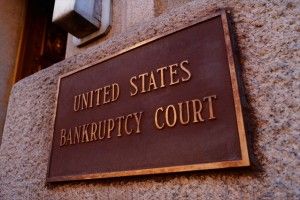The train that broke California’s back
by CalWatchdog Staff | July 12, 2012 9:02 am
 [1]July 12, 2012
[1]July 12, 2012
By Chriss Street
The state of California was already facing a $19 billion budget deficit, had shorted K-12 public schools $8 billion and are releasing imprisoned rapists into the “community probation” when the California Legislature’s Democratic majority voted last week to approve selling $4.6 billion in new state bonds to build 130 miles of railroad track through some of the most uninhabited farm country in Central California.
The arrogance of the leveraging the already insolvent state caused a volcanic public outrage. But the Legislature and Governor Jerry Brown were desperate to get their paws on $3.3 billion in federal grants from the Obama Administration.
Then, in a shocking development, Moody’s Investor Services[2], which was expected to provide the credit rating to justify selling the debt, may have just torpedoed California’s credit rating by tripling their estimate of the state’s unfunded public pension liability from $38.5 billion to a $109.1 billion liability and raising the annual cost of state pension funding by $7.3 billion.
California has long been ground zero for financially dysfunctional government. Under the California State Constitution, the Legislature is required to approve a “balanced budget” each year. At the start of the fiscal 2011-12 budget on July 1, 2011, California had an $8.2 billion budget deficit carry-over from the prior year[3]. No problem for Sacramento political magicians to balance a budget. They simply estimated the state would collect $9.7 billion in capital gains taxes from the Facebook initial public offering[4].
Twelve months later, the state has collected less than $1 billion from Facebook and the deficit has grown by another $1.4 billion to $9.6 billion. This year, the Legislature passed another dicey “balanced budget” on the expectations voters would approve in November $8.5 billion in new sales and income taxes.
Ponzi spending
The key to California politicians being able to continue their Ponzi[5] spending far above the state’s revenues has been the willingness of ratings agencies, like Moody’s, to dutifully collect huge consulting fees for providing the state with an “investment grade” credit rating. Armed with the Moody’s “Good Housekeeping Seal of Approval,” municipal bond investors have been willing to loan California huge amounts of cash.
But the bogus choo choo bonds may have been so toxic even for Moody’s high tolerance for government shenanigans; they were the proverbial “straw that broke the camel’s back.” If Moody’s issued an investment-grade credit rating and the railroad bonds eventually default, the firm would undoubtedly be sued for billions of dollars by lots of angry retired people who tend to be the main buyers of municipal bonds.
This newfound conservatism by Moody’s comes at a very inopportune time for the state and its 58 counties and 478 cities. Each year, California governments have borrowed huge amounts of money by selling low-cost municipal bonds in late July to finance the period until they collect the majority of their tax revenues in December and April. The state of California was expecting to borrow $28 billion and municipal governments were anticipating borrowing anther $50 billion.
But any downgrades of the state or municipality debt from investment grade to “junk bond” would send the cost of borrowing up to Greek-like levels of 20 percent. This appears to be exactly what just happened to San Bernardino[6], forcing the city to file for an emergency Chapter 9 municipal bankruptcy. According to Los Angeles Times[7]:
“The city’s fiscal crisis has been years in the making, compounded by the nation’s crushing recession and exacerbated by escalating pension costs, lucrative labor agreements, Sacramento’s raid on redevelopment funds and a city reserve that is tapped out”.
This same language could apply to most of the cities and counties in California over the last few years. The real reason for the collapse of San Bernardino and the growing panic is Moody’s was about to downgrade the city’s credit rating to junk. With state and most local governments running out of cash, there will be more bankruptcies in California. It looks to me that it was the train that broke California’s back.
Chriss Street will be in Studio with Paul Preston on “The Inside Education”; Streaming Live from Monday July 9 to Friday July 13. Click Below to listen between 7-10 pm each night: www.mysytv.net/kmyclive.html[8].
- [Image]: http://www.calwatchdog.com/2011/08/11/judges-should-voluntarily-cut-own-pay/bankruptcy-court-4/
- Moody’s Investor Services: http://www.moodys.com/research/Moodys-proposes-adjustments-to-US-public-sector-pension-data--PR_249988
- $8.2 billion budget deficit carry-over from the prior year: http://sco.ca.gov/Files-ARD/CASH/fy1112_june.pdf
- $9.7 billion in capital gains taxes from the Facebook initial public offering: http://money.cnn.com/2012/05/09/technology/facebook-tax-bill/index.htm
- Ponzi: http://en.wikipedia.org/wiki/Ponzi_scheme
- San Bernardino: http://latimesblogs.latimes.com/lanow/2012/07/san-bernardino-bankruptcy-only-150k-bank-accounts.html
- According to Los Angeles Times: http://www.latimes.com/news/local/la-me-0711-san-bernardino-20120711,0,5646419.story
- www.mysytv.net/kmyclive.html: http://www.mysytv.net/kmyclive.html
Source URL: https://calwatchdog.com/2012/07/12/the-train-that-broke-californias-back/